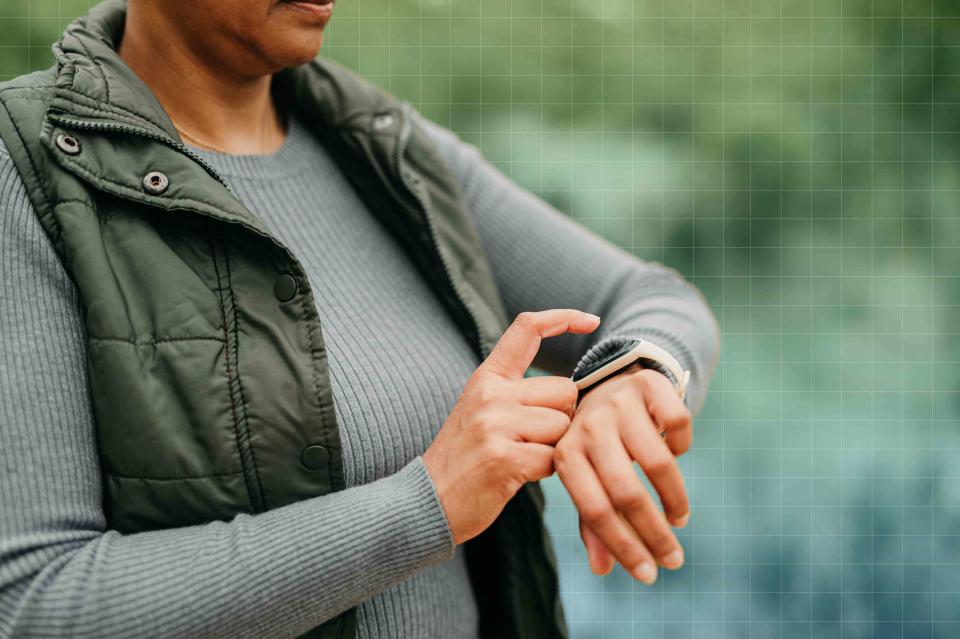Here’s Why You Shouldn’t Measure Your Blood Sugar with Your Smartwatch, According to the FDA
Wearable tech like smartwatches and rings can monitor your heart rate and steps, but blood sugar? Not so much.

Getty Images
Reviewed by Dietitian Jessica Ball, M.S., RD
Smartwatches and smart rings can do some very cool things for your health—like monitor your heart rate, count your steps and provide an EKG of your heart rhythm. And while many of them claim to also measure blood glucose (sugar) levels, the accuracy of these devices for this purpose has been seriously called into question, triggering a warning from the U.S. Food and Drug Administration (FDA.
The warning, issued on February 21, 2024, states that any device that claims to measure blood glucose levels without piercing the skin has not been authorized, cleared or approved by the FDA, and people are advised to stop using them for this purpose.
This includes popular smartwatches, as well as lesser-known knock-off brands. The same goes for the smart rings.
Related: Should You Check Your Blood Sugar Even If You Don't Have Diabetes? What Dietitians Have to Say
What’s the Big Deal?
If you have diabetes, monitoring your blood sugar is probably part of your daily routine. Your blood sugar readings help you decide what actions you need to take regarding food, diabetes medication and activity to help manage blood sugar levels since you may not always be able to feel when your blood sugar is going too low or too high. This allows you to catch low or high readings before your blood sugar reaches levels that can have detrimental effects—including coma or death.
As an example, if a blood sugar reading from your smartwatch tells you that your sugar is too high, and you base the amount of diabetes medication you take on that reading—but the reading is wrong—it can have serious adverse effects that also include possible coma and death—sometimes within just a few hours.
According to the FDA warning statement, the only devices that have been approved for use to measure blood glucose are those that require the skin to be pierced—like monitors that use a drop of blood from a finger stick or continuous glucose monitoring devices (CGMs).
A CGM is a small FDA-approved disc that you wear (often on the back of your arm) that uses a microneedle to just barely puncture the skin—but enough of a puncture to monitor blood glucose, per a 2022 study in Micromachines. The CGM is continuously monitoring your blood sugar levels and the sensor in the CGM sends its readings to your smartphone.
It’s important to differentiate between a CGM that sends its signal to your smartphone and a smartwatch that sits on top of your wrist and claims to monitor your blood sugar without piercing the skin. Smartwatches and rings that claim to monitor blood sugar have been shown to be inaccurate—setting you up for the potential consequences of inaccurate readings.
In other words, the most accurate way to measure the amount of glucose hanging out in the blood is to go directly to the source—your blood.
Related: These Are the Fastest Ways to Stabilize Your Blood Sugar If You Have Diabetes
The Bottom Line
If you need to monitor your blood sugar levels and have been using a smartwatch or ring to do so, please stop. Talk to your healthcare practitioner about getting a monitor that uses finger sticks or a CGM. While smartwatches and rings are cool to wear and can track many other things (like your steps or heart rate), blood sugar levels are not one of them—at least not yet.
Read the original article on Eating Well.

